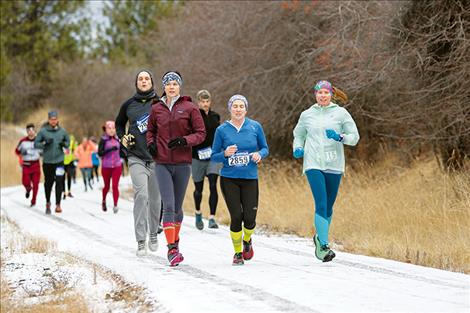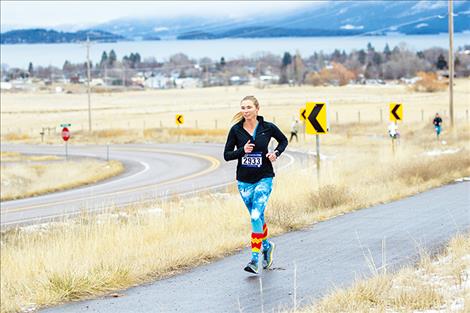Runners can keep going in winter months with preparation
Hey savvy news reader! Thanks for choosing local.
You are now reading
1 of 3 free articles.
Many running enthusiasts avoid the cold weather and choose to stay toasty in a warm gym on a treadmill rather than venture outdoors to pound the pavement for a few miles once the snowdrifts and the frigid wind starts to howl.
Lou Brenner is a veteran marathoner and member of the Polson Running Club, which is a nonprofit organization that hosts races and promotes running throughout the year in the Mission Valley. Brenner offers a few tips concerning winter running.
“Getting out the door is by far the hardest part of the run,” said Brenner. “The hardest step is the first one. No matter how cold, wet or windy, find ways to trick yourself to get out the door and get moving. Pretty much, without fail, no matter how bad you don’t want to go, within 15 minutes of starting, you are feeling good and having fun.”
In cold weather, it takes longer to get your body temperature up and muscles warm to reach their maximum efficiency, so a pre-run warm-up indoors before you head outside is suggested. Warming up inside loosens your muscles, gets your blood flowing, increases your heart rate and reduces the shock to your system when you open the door to head out on your run.
It’s difficult to give a one-temperature-fits-all guide for clothing because how much you wear depends a lot on your internal thermometer and factors like your body shape and size. The basic guidelines are to keep as warm as possible. Start with a snug-fitting, moisture-wicking base layer, which holds heat close to your body and transfers moisture away. Wear a jacket that’s windproof in front and breathable in back. If you’re a little cold at the beginning but sweating by the end of your run, you’ll know you’re doing it right.
If you’re running outside in the snow and ice regularly, you might want to invest in a pair of lightweight trail running shoes, which often have weatherproof uppers and the added benefit of traction on the outsole.
The old running adage “there is no such thing as bad weather, only bad gear” comes into play said Brenner. “I thought it absurd, but in time, I came to realize much truth in the phrase. If you have the right gear, it is fun to exercise in inclement weather.”
Cover up as much as possible. Make sure that most of your exposed skin is covered, including ankles, neck, fingers and head.
Fingers stay warmer when not separated by fabric. “Mittens work way better than gloves for keeping hands warm,” said Brenner.
If you like logging your miles during early morning or dusk hours, it’s important to make yourself more visible. “Wear lights or reflective gear so you are visible,” said Brenner. “It’s surprising how invisible you are when running in the dark.”
Staying properly hydrated even if you don’t feel thirsty is also important in cold weather. “You need to hydrate just as much in the winter as you do in the summer,” explained Brenner. “Don’t short yourself on water.” Without visual cues like dripping sweat, you don’t always realize you’re thirsty in cold temperatures.
As soon as you stop running, your metabolic rate drops, meaning your body’s internal furnace cranks down its heat production. Putting on dry layers and sipping on a warm drink, like tea or coffee, will help. A warm shower or bath is a good way to defrost.
“After your run, get out of your sweaty clothes fast and put on some warm clothes,” said Brenner. “You go from feeling great and warm to absolutely freezing pretty quickly after a run.”

















